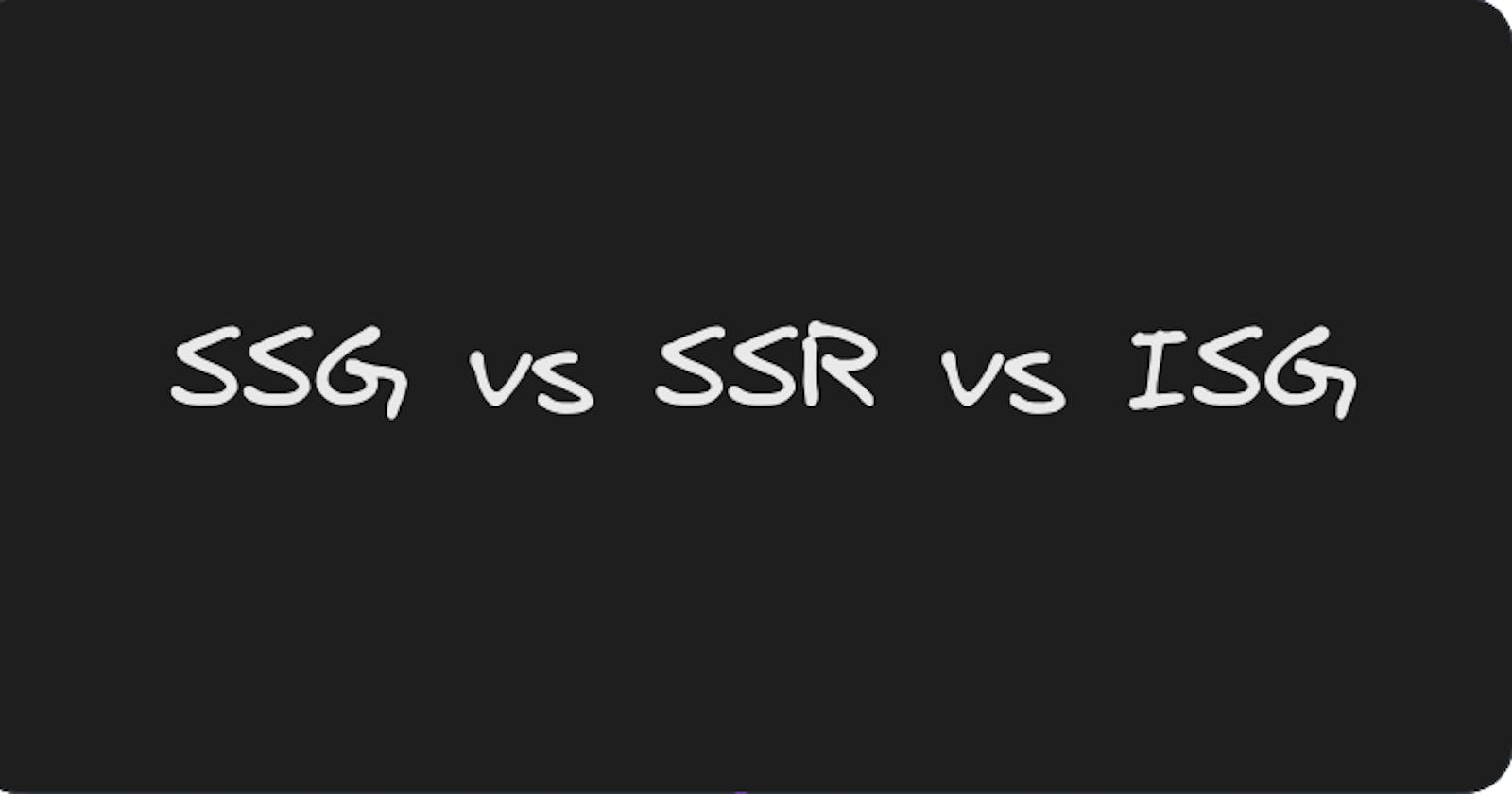1. Static Site Generation (SSG):
Definition: Static Site Generation is a technique where a website's HTML pages are generated at build time and serve as static files to the client. The content is fixed at the time of generation and doesn't change with each request.
How it Works:
During the build process, a static site generator (like Next.js) fetches data, generates HTML pages, and stores them as static files.
These static files can be served by a content delivery network (CDN) or a web server directly to users without the need for server-side processing.
Pros:
Fast Loading: Since the pages are pre-generated, they load quickly for users.
Scalability: Static sites are easy to scale as they don't involve dynamic server-side processing.
Cons:
- Limited Dynamic Content: Dynamic or personalized content may be limited since the content is fixed at build time.
Use Cases:
Blogs
Marketing Websites
Documentation Sites
2. Server-Side Rendering (SSR):
Definition: Server-Side Rendering is a technique where the server dynamically generates HTML content for each request, taking into account the current data and user context.
How it Works:
When a user requests a page, the server fetches the necessary data and generates HTML dynamically.
The fully rendered HTML is sent to the client, which can include personalized content based on the user or real-time data.
Pros:
Dynamic Content: SSR allows for dynamic content that can change with each request.
SEO Friendly: Search engines can easily index the content since the HTML is fully rendered on the server.
Cons:
- Slower Initial Load: The initial load time might be slower compared to static sites as the server needs to generate HTML for each request.
Use Cases:
E-commerce Platforms
Content-rich Websites
Apps with Real-time Updates
3. Incremental Static Generation (ISG):
Definition: Incremental Static Generation is a hybrid approach that combines the benefits of both SSG and SSR. It allows for static generation at build time while also enabling dynamic content regeneration as needed.
How it Works:
During the build process, pages are generated statically like in SSG.
However, certain pages or portions of pages can be designated for re-generation based on triggers like user requests or changes in data.
When a user requests a page that needs to be re-generated, the server does so on-the-fly, ensuring that the content is up-to-date.
Pros:
Best of Both Worlds: Combines the speed of static sites with the flexibility of dynamic content.
SEO Friendly: Offers the SEO benefits of pre-rendered HTML.
Cons:
- Complexity: Implementation might be more complex than traditional SSG.
Use Cases:
News Websites
Blogs with Real-time Updates
Sites with a Mix of Static and Dynamic Content
Summary:
Static Site Generation (SSG): Best for sites with mostly static content that doesn't change frequently.
Server-Side Rendering (SSR): Suitable for applications requiring dynamic content that changes on each request.
Incremental Static Generation (ISG): A hybrid approach providing the advantages of both SSG and SSR, suitable for sites with a mix of static and dynamic content.
